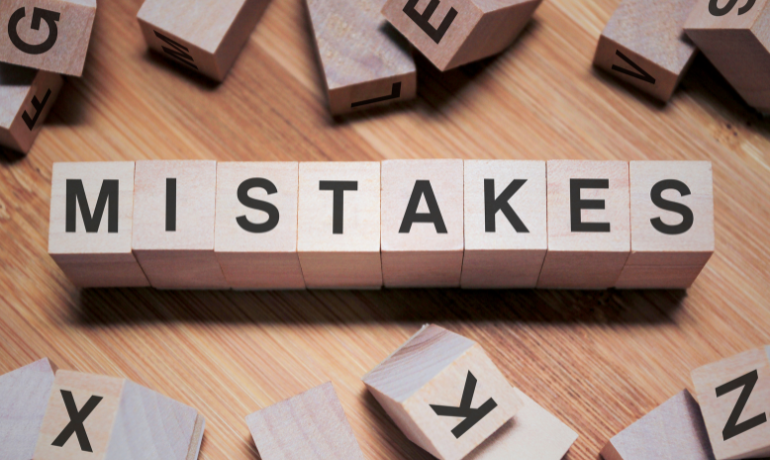Here’s the thing about websites: people judge them instantly. Doesn’t matter how pretty your design is, if the “engine under the hood” — your hosting — is weak, you’re in trouble. Sadly, I’ve seen too many site owners fall into the same traps when picking or managing their hosting.
The result? Slow pages, lost sales, and sometimes a site that just vanishes when you need it most.
But don’t panic. Most of these mistakes are totally avoidable if you know what to watch for. Let’s run through the biggest ones so you don’t end up learning the hard way.
Mistake 1: Picking the Cheapest Plan Because… It’s Cheap
I get it. Saving money feels good. But rock-bottom hosting plans usually mean rock-bottom performance. Expect sluggish load times, random downtime, and support that takes forever to reply.
A smarter move? Spend a little more for stability. It’ll save you way more in lost sales and angry visitors.
Mistake 2: Forgetting Your Site Might Grow
Right now, your blog or store might be tiny. But what about in six months? Or a year? If you choose a plan that can’t scale, you’ll hit roadblocks fast.
Better to pick a host that lets you upgrade easily (say, from shared to VPS, or VPS to dedicated). Growth should feel smooth, not like ripping your site out by the roots.
Mistake 3: Pretending Security Isn’t Your Problem
Hackers don’t only target big brands. Smaller sites are easier prey. If your host doesn’t include things like SSL, firewalls, and backups, you’re basically leaving your front door wide open.
Spend the extra couple bucks on security add-ons if you need to. Your reputation’s worth more than the upgrade fee.
Mistake 4: Skipping Backups (Until It’s Too Late)
Picture this: you wake up, open your laptop, and your website’s gone. Poof. A hack, a server crash, or some glitch took it out.
If you assumed your host “handled backups,” you might be out of luck. Always double-check. Even better, set up your own off-site backups too. One copy is never enough.
Mistake 5: Not Testing Customer Support
Most people don’t think about support until everything’s on fire. By then, it’s too late.
Look for providers with 24/7 support that actually answers quickly — not just a chatbot loop. Read reviews. Call them once before you sign up if you’re not sure.
Mistake 6: Guessing Wrong on Bandwidth or Storage
Another classic mistake: underestimating your needs. Run out of bandwidth, and your site might crash. Go over storage, and surprise! You get hit with extra charges.
Plan for more than you think you’ll need. It’s better to be over-prepared than scrambling when traffic spikes.
Mistake 7: Ignoring Uptime Guarantees
“Uptime” sounds boring until your site goes down during a big launch. If your host promises anything less than 99.9% uptime, walk away.
And don’t just take their word for it. Look at independent monitoring reports, not just marketing claims.
Mistake 8: Forgetting Where Your Server Lives
If your target audience is in New York, but your server’s chilling in Singapore, guess what? Your site loads slower. Distance matters.
Pick a host with servers close to your audience, or one that offers a Content Delivery Network (CDN) to speed things up worldwide.
Mistake 9: Skimming the Terms & Conditions
I know… nobody wants to read the fine print. But that’s where providers hide little surprises — like bandwidth caps, refund rules, or sneaky fees.
Spend ten minutes reading it. Annoying? Sure. Worth avoiding a nasty bill later? Absolutely.
Mistake 10: Staying on a Plan That’s Holding You Back
Your site changes, your traffic changes — your hosting should change too. Hanging onto a plan that no longer fits means slower pages, security holes, and frustrated customers.
If you’re seeing performance warnings or downtime, don’t wait. Upgrade before it becomes a bigger problem.
Final Thoughts
Mistakes are part of the journey, but hosting mistakes are expensive ones. The good news? Every single issue above is avoidable.
At ChromeIS, we’ve seen all of these pitfalls — and we’ve built our hosting to help you skip them. From solid security and daily backups to easy scalability and real support, we’ve got your back whether you’re starting small or scaling big.
Bottom line? Don’t let simple hosting slip-ups sink your site. With the right provider, your website can be fast, reliable, and secure — exactly what your visitors expect.
Similar Post
The Silent Cost of Wrong Hosting: How Cheap Plans Damage Small Businesses in Pakistan
Small businesses in Pakistan often make the same mistake
What “Unlimited Hosting” Should Actually Mean in 2026
Every year, hosting companies come up with new buzzwords



